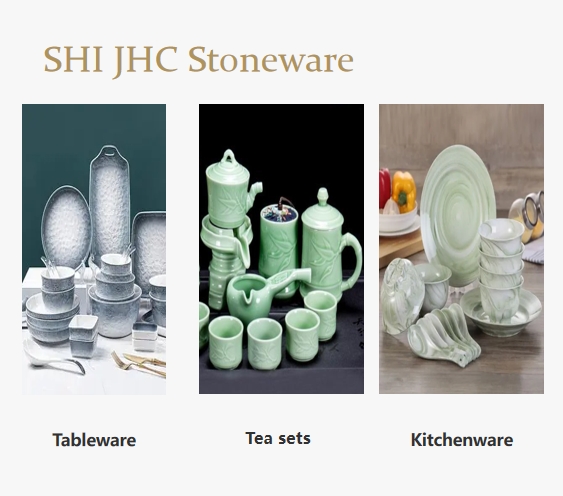Stoneware, a type of ceramic that is fired at a high temperature of approximately 1200 ℃ to achieve vitrification (i.e., similar to glass, liquid cannot penetrate). Because stoneware is dense, glazing is only for decoration. Stoneware originated in China around 1400 BC and was exported to Europe in the 17th century. These red to dark brown stoneware were replicated and imitated by Germany, England, and the Netherlands.
Introduction to Stoneware Porcelain
Pottery can be broadly divided into four categories: earthenware, stoneware, pottery, and porcelain.
Earthware: The body is coarse and porous, with an unclean color. The firing rate of the finished pottery is the lowest, and it has water absorption. The sound is rough and the rhyme is short, like a brick or tile bowl;
Stoneware: The body is dense and hard, with a natural mud color. The firing rate of the pottery is between 1140 ℃ and 1280 ℃, without water absorption. The sound is rough and long, like purple clay pottery.
Pottery: The body is also relatively fine, glazed, and has a high degree of heat when made into pottery. It has water absorption, rough sound, and short rhyme.
Porcelain: The body is dense and transparent, glazed, and has the highest firing rate. It has no water absorption, and has a clear and long-lasting sound.
Classified by temperature
Low temperature: pottery
Medium temperature: fine pottery, stoneware porcelain
Medium to high temperature: white porcelain, reinforced porcelain
High temperature: high white porcelain, jade porcelain, high white jade porcelain
Preparation method
Its feature lies in the following steps in sequence: directly pasting glaze on the glaze body, printing the base label film flower paper on it according to the design pattern or pattern of the color material, and firing the glaze body at a temperature of 1180 ℃ to 1270 ℃ for 4 hours to 14 hours in one go to produce the product; And the composition and weight percentage content of the pigment are: black material 30% to 70%, the rest is at least one of kaolin, raw material, and glaze, and its firing temperature is the same as that of stoneware glaze. The present invention can significantly reduce fuel consumption, thus having a low price point, saving energy, and reducing environmental pollution; Relax the firing temperature of the porcelain glaze to 1180 ℃~1270 ℃, and adjust the firing temperature of the base color material to be the same as the firing temperature of the stoneware glaze body. At the same time, it is fired and matches well; Directly stick the bottom label film flower paper onto the glaze, as it does not require water and does not require peeling, it will not damage the glaze surface and is not easy to explode, keeping the pasted printed pattern lines clear and complete.

